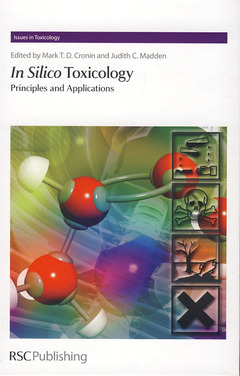In silico toxicology Principles and applications (Issues in toxicology series) Series
Auteur : CRONIN Mark

In Silico methods to predict toxicity have become increasingly important recently, particularly in light of European legislation such as REACH and the Cosmetics Regulation. They are also being used extensively worldwide e.g. in the USA, Canada, Japan and Australia. In assessing the risk that a chemical may pose to human health or to the environment, focus is now being directed towards exploitation of in silico methods to replace in vivo or in vitro techniques. A prediction of potential toxicity requires several stages: Collation and organisation of data available for the compound, or if this is not available, information for related compounds. An assessment of the quality of the data. Generation of additional information about the compound using computational techniques at various levels of complexity - calculation of physico-chemical properties, 2-D, 3-D / MO descriptors and specific receptor modelling / interaction. Use of an appropriate strategy to predict toxicity - ie a statistically valid method which makes best use of all available information (mechanism of action, activity for related compounds, extrapolation across species and endpoints, likely exposure scenario amounts over time etc).Consideration then needs to be given to how this information is used in the real world ie use of expert systems / tools as relevant to assessors (if sufficiently different to previous) - weight of evidence approaches. Finally evidence should be presented from case studies within this area. No other publication brings together information on all of these areas in one book and this publication is unique in that it provides a logical progression through every one of these key stages and defines the use of computational approaches to predict the environmental toxicity and human health effects of organic chemicals. The volume is aimed at the developers and users of in silico toxicology and provides an analysis of all aspects required for in silico prediction of toxicology, including data collation, quality assessment and computational approaches. The contributions from recognised leaders in each of these areas include evidence of the use and applicability of approaches using real world case studies concerning both environmental and human health effects. The book provides a very useful single source reference for people working in this area including academics, professionals, under- and post-graduate students as well as Governmental Regulatory Scientists involved in chemical risk assessment and REACH.
Date de parution : 10-2010
Ouvrage de 669 p.
Disponible chez l'éditeur (délai d'approvisionnement : 13 jours).
Prix indicatif 207,02 €
Ajouter au panier


